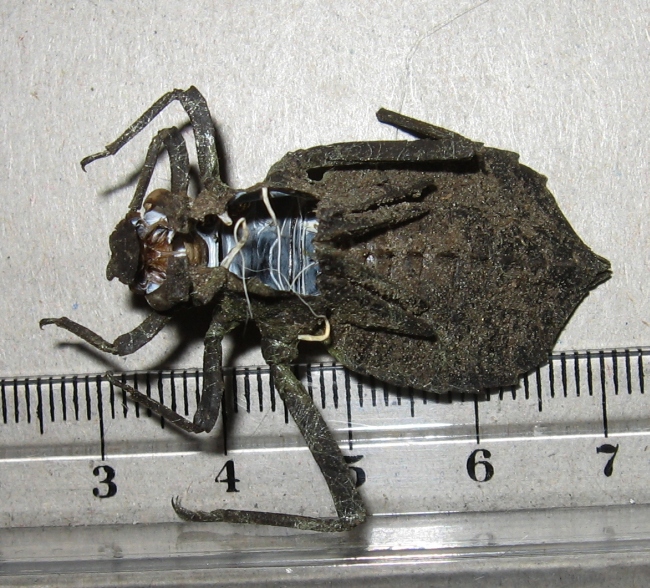|
Tweed, Ontario, the Moira River, east of town near Collin's Point:
rock-bottomed river with fast flowing water, rapids and emergent rocks,
the shoreline vegetation consists of wooded areas and clearings supporting tall grasses and wildflowers.
|
The discovery of an exuviae two or three days old prompted a search for emerging and molting Dragonhunter naiads.
Whilst the female featured in these images was making the passage to adulthood, another naiad crawled ashore to make its own transformation
(June 09, 2014).
The first signs of the emergence begin shortly before 11:40 AM
as the exoskeleton splits.
|
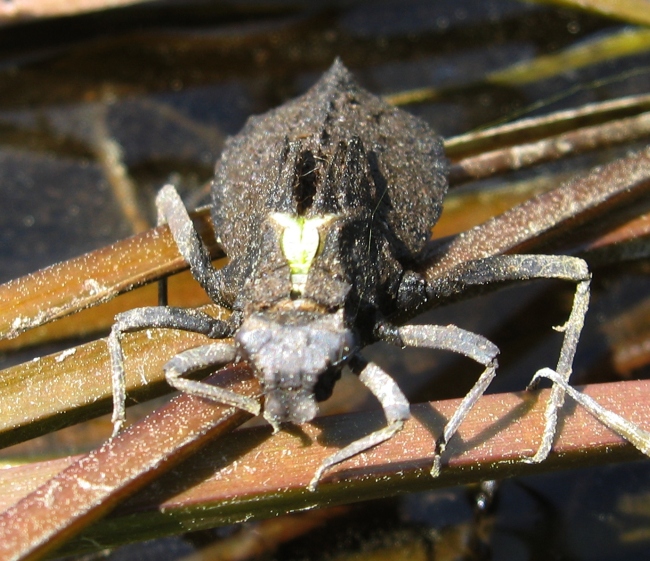
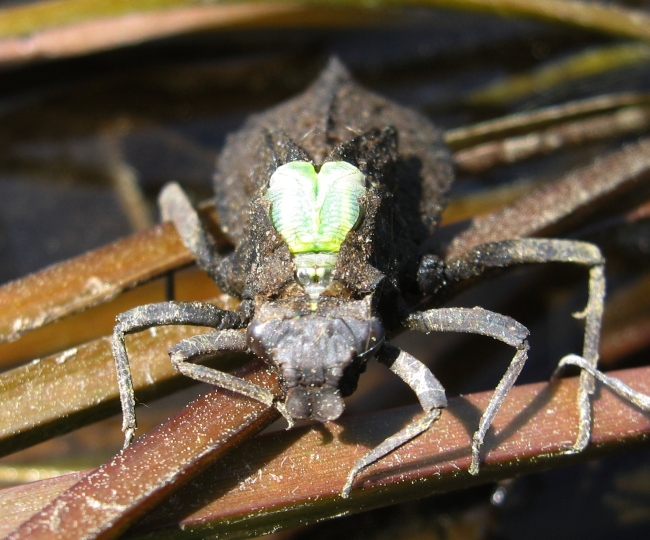
|
11:42 AM ... the eyes begin to show
|
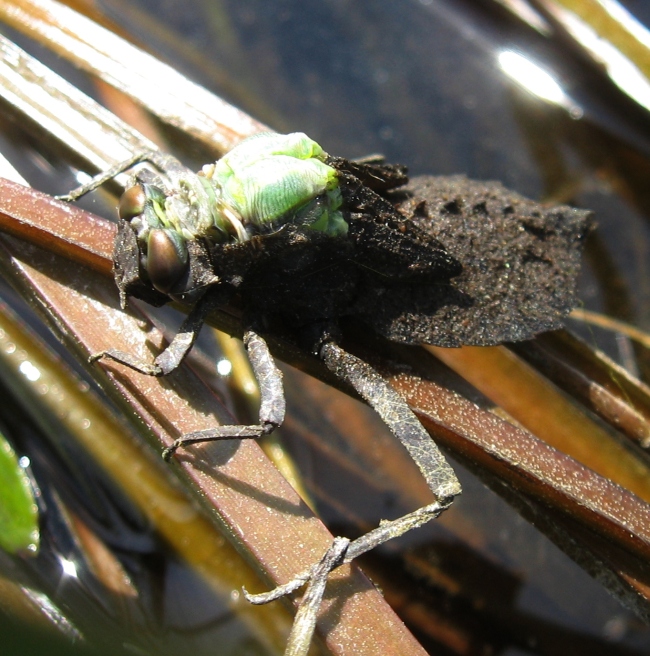
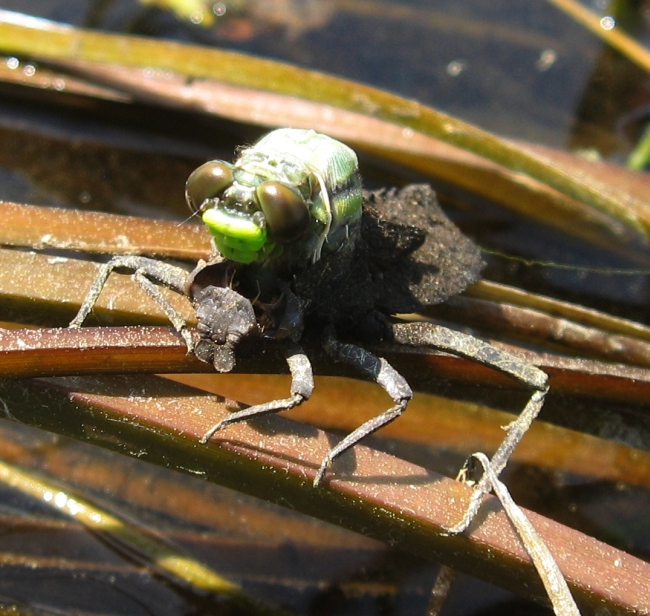
|
11:45 AM ... the white string-like structures are a consequence of the dragonfly's change from water breather to air breather.
Dragonfly naiads breathe through internal gills in their anus, the adult has pairs of openings called spiracles along the abdomen and thorax.
The spiracles, closed during the insect's larval incarnation by the "strings" seen in the images, are now being opened – in other words the tissues which acted as "plugs" are being left behind with the rest of the exoskeleton.
|
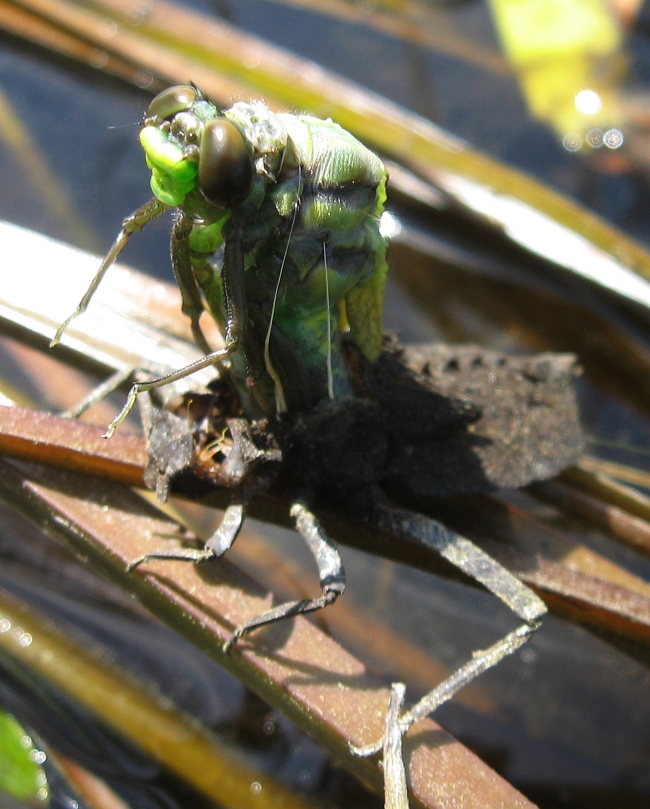
|
11:47 AM ... the emerging teneral Dragonhunter resembles a sea monster rising from the deeps ...
|
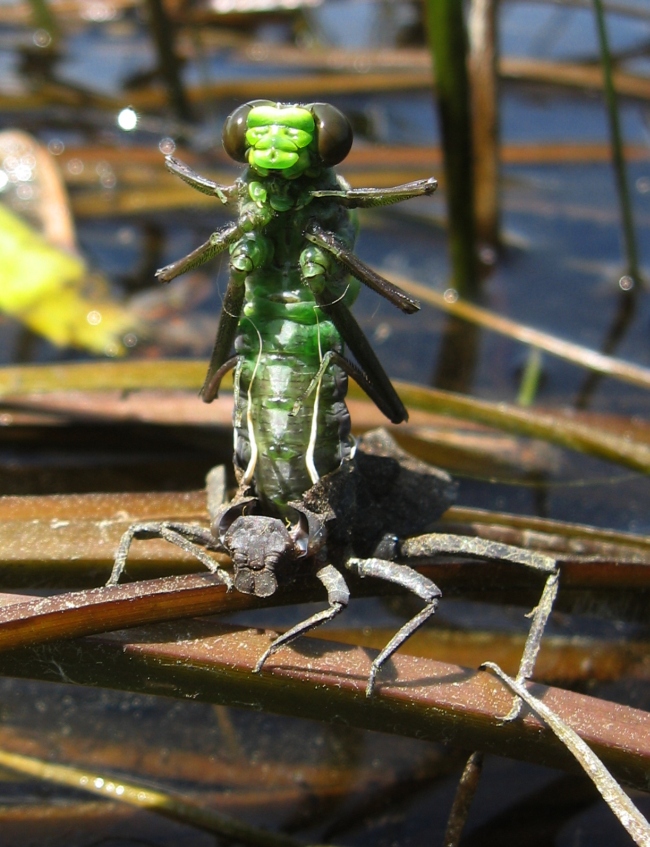
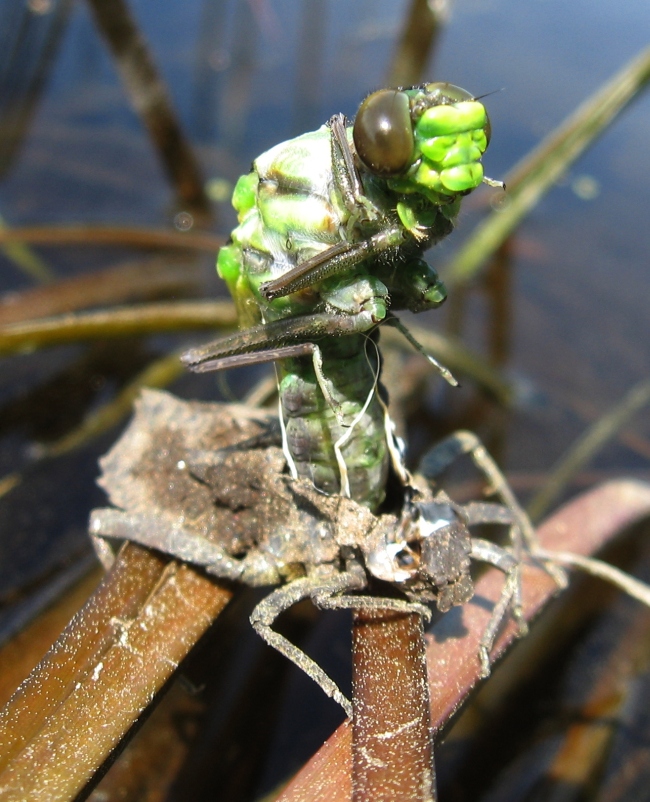
|
11:58 AM ... and eighteen minutes after the first cracks appeared in the larval exoskeleton , the body is free and clear.
|
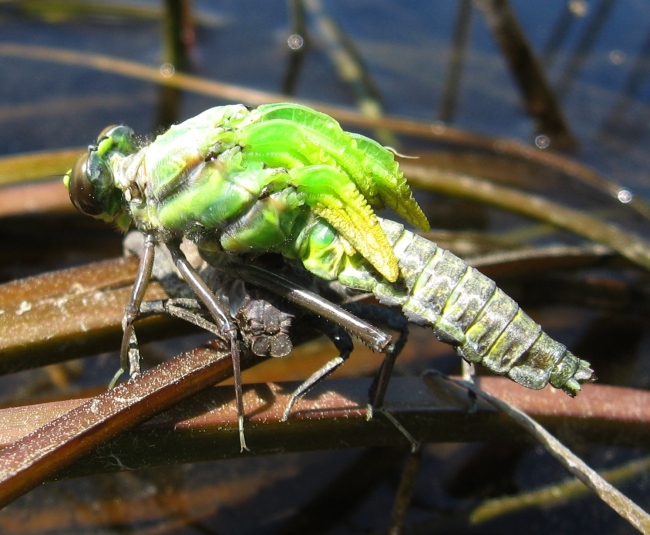
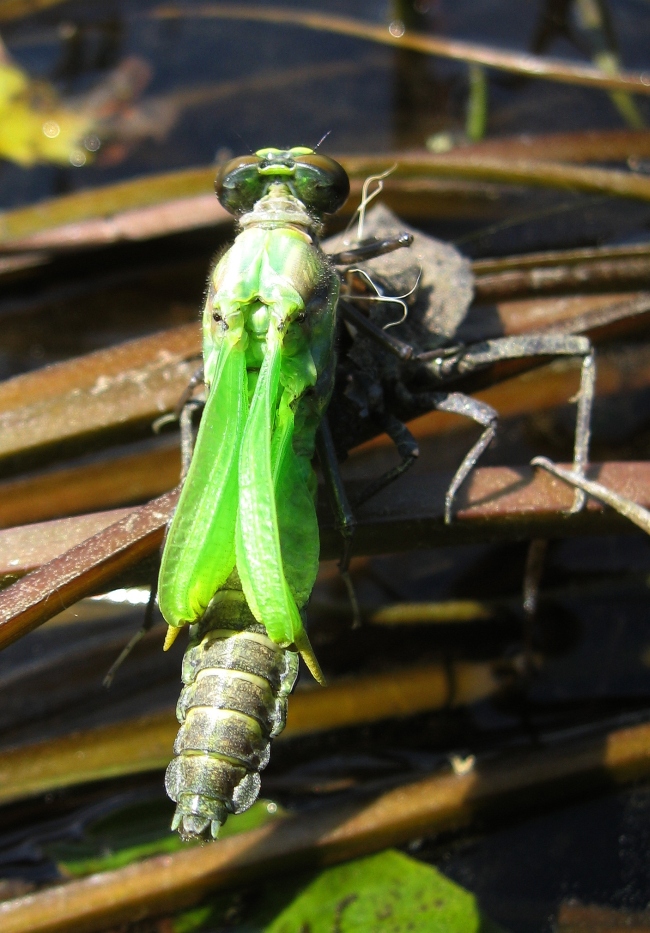
|
12:11 PM ... the pace of change slows as haemolymph is pumped through the insect's body and the wings and abdomen expand to their adult dimensions.
|
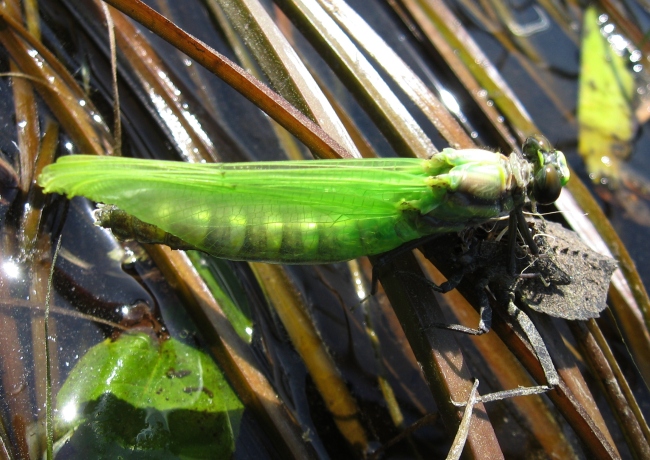
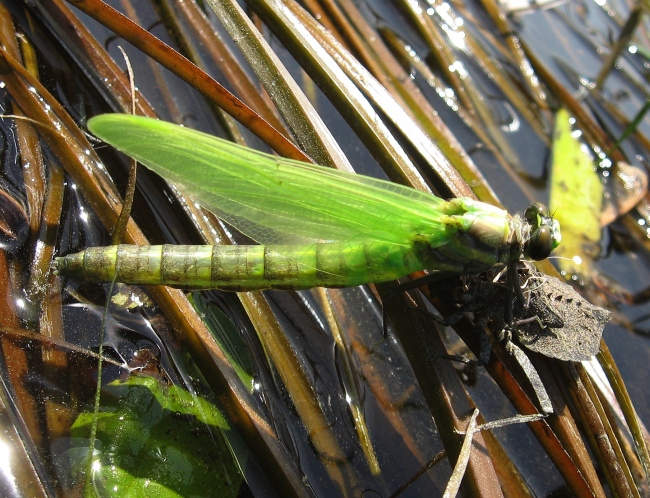
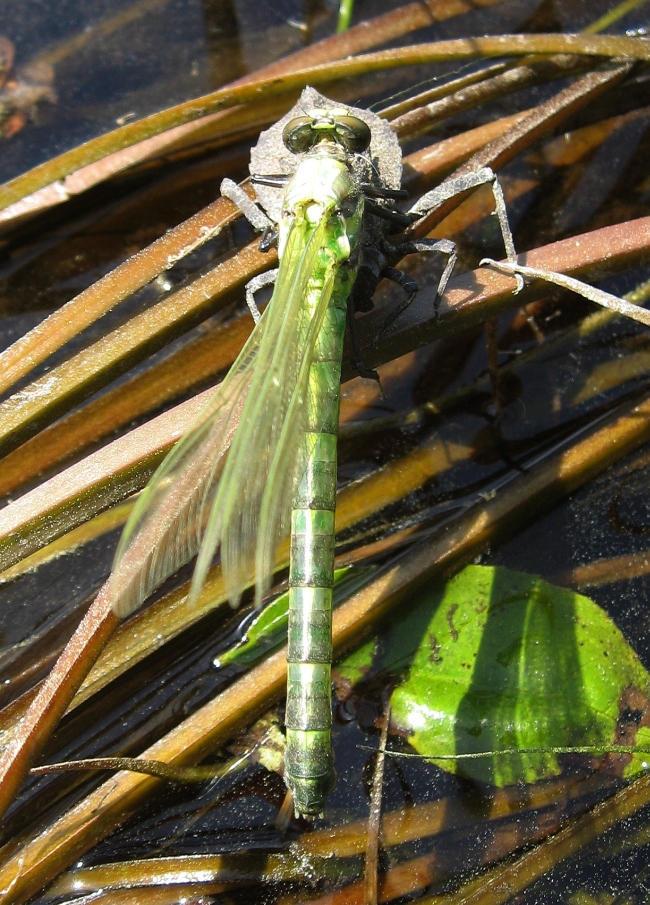
|
12:54 PM ... the wings are fully deployed.
By 1:16 PM the teneral had already taken its maiden flight into the safety of the shoreline shrubbery.
The entire process, from the first signs of emergence to being capable of flight, took about an hour and fifteen minutes.
|
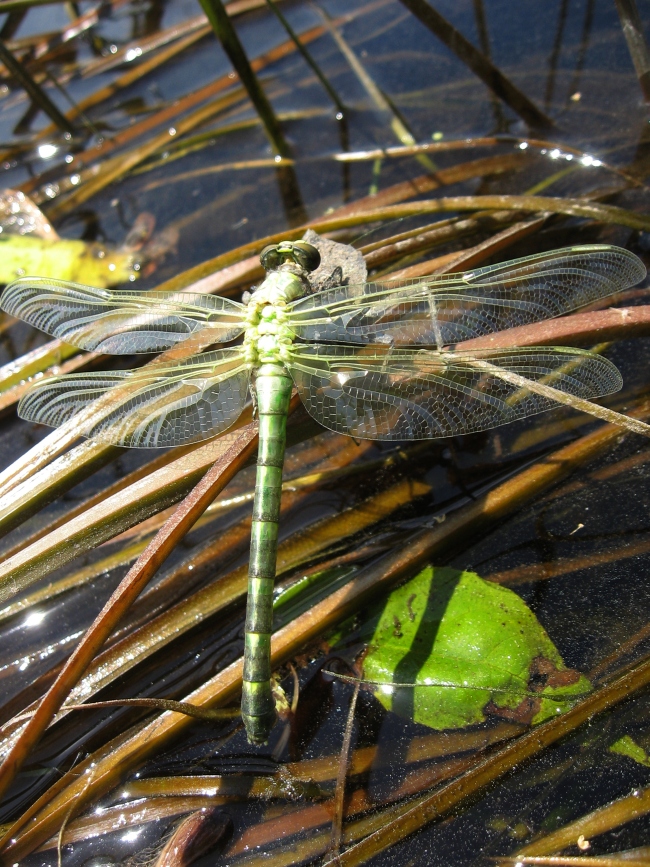
|
The exuviae was collected for future reference.
|
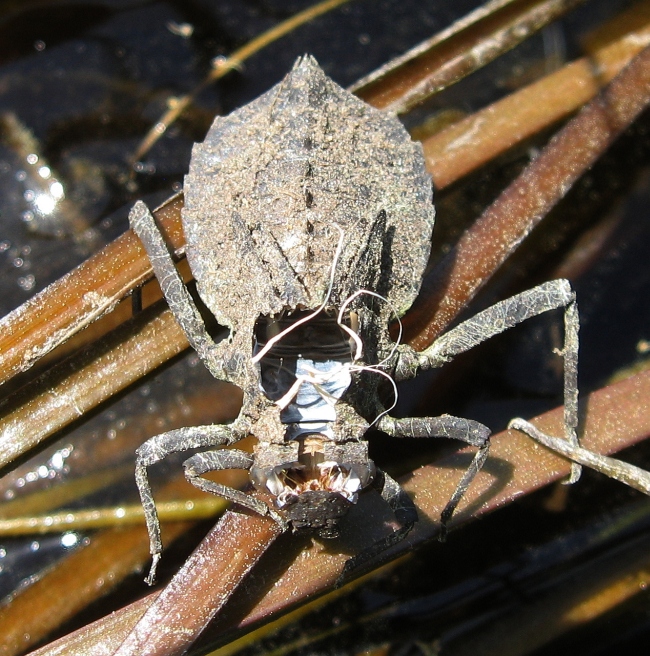
|
Dragonhunter naiads and exuviae can't be confused with those of other dragonflies.
Their large size – a good healthy 40 mm – and flattened, dead leaf aspect make them unique.
Note the enlarged third antennal segments (the round nubs at the front of the head) typical of the family Gomphidae.
|
